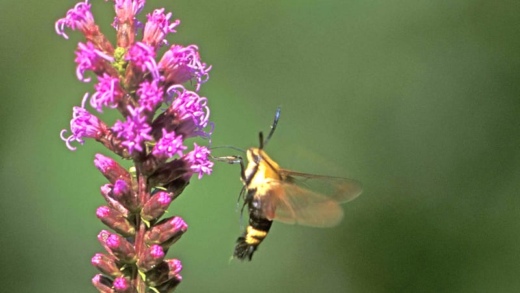The long-eared hopping jerboa, found in Central Asia, exhibits unique adaptations for survival in desert habitats. Its remarkable hopping movement, diet of seeds and insects, and efficient water conservation strategies highlight its resilience. This small mammal plays a crucial role in the ecosystem by aiding in seed dispersal and serving as prey for larger animals. With fascinating physical traits, including long ears and impressive jumping abilities, the jerboa captivates both scientists and nature lovers alike.
How Does the Long-Eared Hopping Jerboa Move Like a Kangaroo?
The long-eared hopping jerboa is a remarkable creature known for its unique movement, which closely resembles that of a kangaroo. With its powerful hind legs, this small mammal can leap across the sandy terrain of its desert habitat with impressive agility. Unlike many rodents, the jerboa uses its long ears as a balancing tool while hopping. This adaptation not only aids in mobility but also enhances its ability to detect predators from a distance.
When the long-eared hopping jerboa prepares to jump, it crouches low, gathering energy in its strong legs, and then springs forward. The movement is so efficient that it can cover several feet in a single leap, making it a master of dodging threats. This remarkable hopping mechanism allows the jerboa to escape quickly from predators, such as birds of prey and snakes.
Physical Characteristics of the Long-Eared Hopping Jerboa
The physical characteristics of the long-eared hopping jerboa are nothing short of fascinating. Its most striking feature is undoubtedly its long ears, which can measure up to 7 cm in length. These ears are not just for show; they play a crucial role in thermoregulation, helping the jerboa dissipate heat in its hot desert environment. Additionally, the jerboa has a pig-like snout, which is well-suited for its foraging lifestyle.
Its fur is soft and sandy-colored, providing excellent camouflage against the desert landscape. The long-eared hopping jerboa’s hind legs are significantly longer than its front legs, a feature that enhances its remarkable jumping ability. This unique body structure not only aids in movement but also helps the jerboa maintain stability while navigating the uneven terrain of its habitat.
Survival Strategies in the Desert
Surviving in the harsh conditions of the desert is no small feat, and the long-eared hopping jerboa has developed several strategies to thrive. One of its primary survival tactics is its ability to extract moisture from its food, primarily seeds and insects. This eliminates the need for direct water intake, allowing the jerboa to survive in environments where water is scarce.
Moreover, the long-eared hopping jerboa is nocturnal, which means it is active during the cooler nighttime hours. This behavior helps it avoid the extreme heat of the day, reducing its risk of dehydration. During the day, it remains in burrows, conserving energy and moisture.
In summary, the long-eared hopping jerboa exhibits remarkable adaptations that enable it to survive in one of the planet’s most challenging environments. Through its efficient movement, unique physical traits, and effective survival strategies, this small mammal is a true marvel of nature.
Diet of the Long-Eared Hopping Jerboa
The long-eared hopping jerboa primarily feeds on seeds and insects, making it an omnivorous creature. Its diet is specially adapted to the sparse food resources available in its desert habitat. By consuming seeds, the jerboa not only obtains essential nutrients but also extracts moisture, which is crucial for its survival. This dietary strategy allows it to thrive in an environment where water is limited.
Jerboas possess strong incisors, ideal for cracking open hard seeds. They are also known to forage at night, which helps them avoid the intense heat of the day while seeking food. Some of the common food sources include:
- Desert grasses
- Small insects such as crickets and beetles
- Roots and tubers
- Various seeds
By adapting their feeding habits to available resources, long-eared hopping jerboas demonstrate remarkable resilience. Their ability to find food in the desert not only sustains them but also plays a role in the ecosystem by aiding in seed dispersal.
Urination Frequency
The long-eared hopping jerboa has a unique approach to water conservation, which includes a low urination frequency. This fascinating creature has adapted to minimize water loss, a crucial survival tactic in its arid environment. The jerboa typically urinates infrequently, which allows it to retain moisture more effectively.
Research indicates that the jerboa’s urine is highly concentrated, reducing the amount of water lost during excretion. This adaptation is vital, as it ensures that the jerboa can survive long periods without direct water intake. The ability to conserve water is linked to its diet, as the moisture obtained from food helps meet its hydration needs.
In essence, the long-eared hopping jerboa’s urination habits highlight its remarkable adaptations to desert life. By efficiently managing its water resources, this small mammal can thrive where many other animals struggle.
Adaptations for Extreme Conditions
The long-eared hopping jerboa showcases an array of adaptations that enable it to survive in extreme desert conditions. These adaptations are not only physical but also behavioral, allowing the jerboa to cope with high temperatures and limited food and water resources.
Some key adaptations include:
- Thermoregulation: Its large ears dissipate heat, helping to regulate body temperature during hot days.
- Nocturnal Behavior: Being active at night allows the jerboa to avoid the scorching daytime temperatures.
- Burrowing: By staying in burrows during the day, the jerboa conserves energy and moisture.
- Efficient Metabolism: The jerboa’s metabolism is finely tuned to extract maximum moisture from its food, reducing its reliance on drinking water.
These adaptations illustrate the long-eared hopping jerboa’s incredible ability to thrive in one of the harshest environments on Earth. Each feature plays a significant role in ensuring its survival, making it a true marvel of evolution.
Habitat of the Long-Eared Hopping Jerboa
The long-eared hopping jerboa is primarily found in arid regions of Central Asia, particularly in countries like Mongolia, Kazakhstan, and parts of northern China. This small mammal thrives in sandy deserts, where its unique adaptations allow it to navigate and survive effectively. These habitats often feature sparse vegetation, consisting mainly of desert grasses and occasional shrubs, providing both food and shelter for the jerboa.
In addition to sandy plains, the long-eared hopping jerboa can also inhabit areas with loose soil, which aids in burrowing. These burrows serve as a refuge from extreme temperatures and predators, showcasing the jerboa’s clever survival strategies. The desert environment, while harsh, is perfectly suited for the long-eared hopping jerboa due to its remarkable adaptations for moisture conservation and heat regulation.
The Role of the Long-Eared Hopping Jerboa in the Ecosystem
The long-eared hopping jerboa plays a vital role in its ecosystem, acting as both a prey and a seed disperser. As it forages for seeds and insects, the jerboa contributes to the dispersal of plant seeds across its habitat, promoting plant diversity. This activity not only supports the growth of various plant species but also provides food for other animals within the ecosystem.
Moreover, the jerboa serves as a food source for larger predators, including birds of prey and foxes. This interdependence highlights the importance of the long-eared hopping jerboa in maintaining the balance within its ecosystem. By participating in these ecological interactions, the jerboa helps sustain the delicate web of life in the desert environment.
Fun Facts About the Long-Eared Hopping Jerboa
The long-eared hopping jerboa is full of surprising traits that make it a fascinating creature. For instance, did you know that its long ears can actually be longer than its body? This unique feature not only aids in thermoregulation but also enhances its hearing abilities, allowing it to detect predators from a distance. Another fun fact is that the jerboa can leap up to three meters in a single bound, making it one of the best jumpers in the animal kingdom!
Additionally, the long-eared hopping jerboa has a remarkable ability to go without water for extended periods. It can survive solely by extracting moisture from its food, showcasing its incredible adaptations to desert life. These quirky characteristics make the long-eared hopping jerboa not only an interesting study subject for biologists but also a beloved creature for wildlife enthusiasts.





Comments are closed.